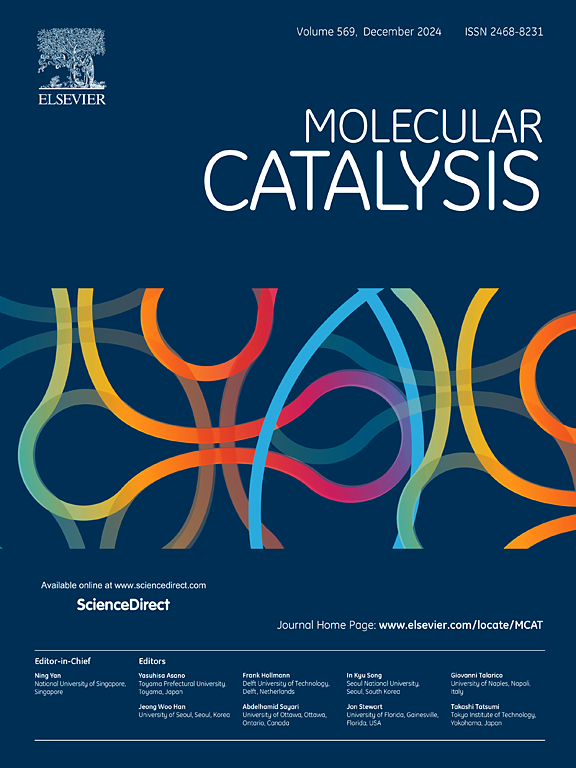Fe-modified Cu/TiO2 catalyst with anti-Pb poisoning performance for the synergistic catalysis of NH3-SCR and CO oxidation
IF 3.9
2区 化学
Q2 CHEMISTRY, PHYSICAL
引用次数: 0
Abstract
Nitrogen oxides (NOx) and carbon monoxide (CO) are two major pollutants in industrial flue gas. Currently, ammonia selective catalytic reduction (NH3-SCR) and CO oxidation catalysts are susceptible to heavy metal impurities such as Pb, which leads to a reduction in catalytic activities. In this study, an excellent anti-Pb poisoning Fe-enhanced Cu/TiO2 catalyst was prepared for the synergistic control of NO and CO with maximum 91.2 % and 99 % conversion ratios at 275 °C. The active components of the modified catalyst were well dispersed on the TiO2. The doping of Fe alleviated the surface aggregation caused by Pb, while the pore size was decreased and the specific surface area was increased. Synergistic interaction between Cu and Fe produced more variable valence states, leading to highly active chemisorbed oxygen and oxygen vacancies, which were beneficial for the NO and CO removal. Furthermore, after Fe loading more acidic sites were retained on the catalyst surface, which improved the oxidation–reduction characteristics of the catalyst. This research presents a viable approach for designing efficient catalyst for the concurrent removal of NO and CO from industrial emissions while demonstrating great resistance to Pb-poisoning.

求助全文
约1分钟内获得全文
求助全文
来源期刊

Molecular Catalysis
Chemical Engineering-Process Chemistry and Technology
CiteScore
6.90
自引率
10.90%
发文量
700
审稿时长
40 days
期刊介绍:
Molecular Catalysis publishes full papers that are original, rigorous, and scholarly contributions examining the molecular and atomic aspects of catalytic activation and reaction mechanisms. The fields covered are:
Heterogeneous catalysis including immobilized molecular catalysts
Homogeneous catalysis including organocatalysis, organometallic catalysis and biocatalysis
Photo- and electrochemistry
Theoretical aspects of catalysis analyzed by computational methods
 求助内容:
求助内容: 应助结果提醒方式:
应助结果提醒方式:


